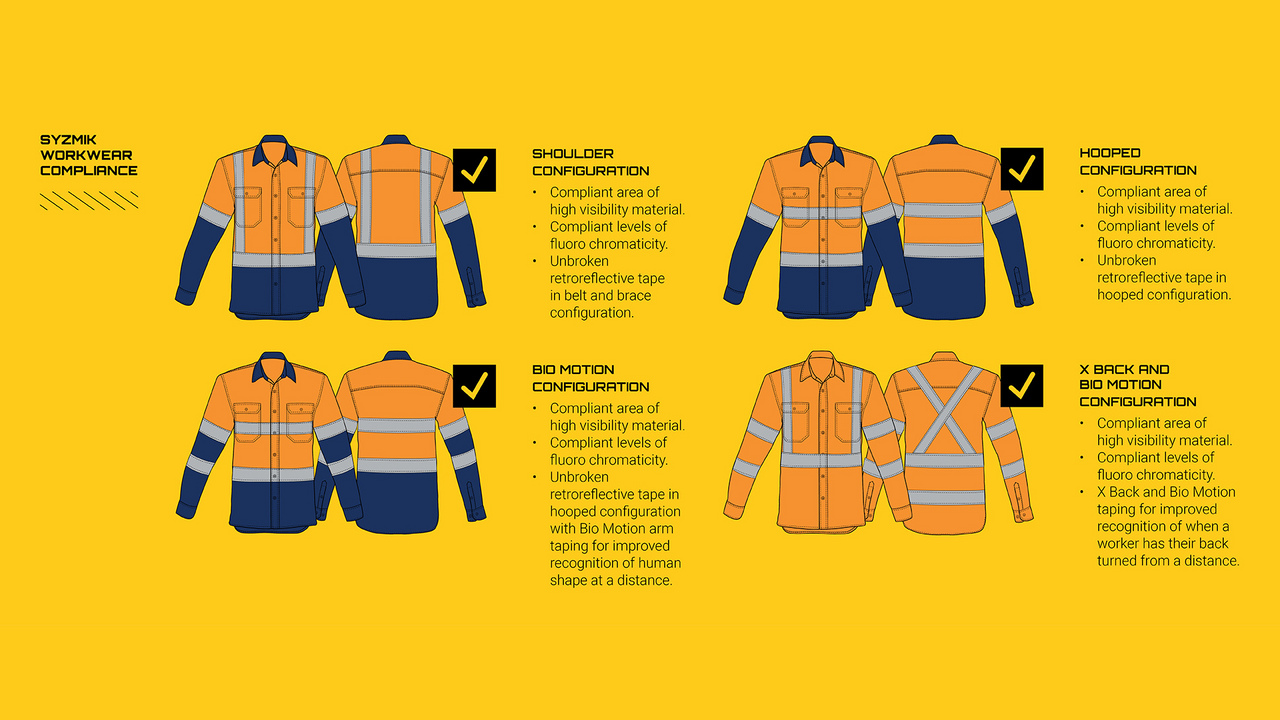High-Visibility Workwear Standards Explained
When it comes to safety on the job, what you wear matters. High-visibility workwear is a critical line of defence for anyone working in high-risk environments, from construction sites to road traffic control. But not all hi-vis is created equal. To ensure your gear provides the protection you need, it must meet specific, rigorous standards. Let's break down the key Australian and New Zealand standards to help you understand what to look for.
The quality of the fabric is the cornerstone of reliable workwear. Before a garment even goes into production, its fabric should be tested against a wide range of criteria to ensure exceptional durability and longevity. Reputable brands only approve fabrics that meet their high standards, ensuring the claims they make are backed by performance.
AS/NZS 4602.1:2011 - The Garment Standard
Once the fabric is approved, the design of the garment itself must meet this standard for high-risk applications. It dictates how the high-visibility fabric is used to maximize wearer visibility.
A key requirement is that any garment covering the upper torso must have at least 0.2m² of unbroken high-visibility fabric on both the front and the back. This area, measured from the top of the shoulders to the waist, cannot be interrupted by non-compliant fabric, which is why designs with full side panels under the arms are not permitted.
This standard also governs the placement, width, and quantity of retroreflective tapes. Importantly, these tapes are not included in the 0.2m² measurement of hi-vis fabric.
The garment classes under this standard are:
- Class D: For daytime use (Day Only)
- Class N: For nighttime use, utilising retroreflective materials (Night Only)
- Class D/N: Suitable for both day and night use (Day/Night)
AS/NZS 1906.4:2010 - The Fabric Standard
This standard is all about the fabric itself, specifically its colour and retroreflective properties. It specifies the chromaticity levels—essentially, the brightness and intensity of the colour—that fabrics need to meet to be compliant. This ensures the material is visible in various atmospheric conditions.
Natural fibers, due to their inherent properties, have a lower chromaticity level. The standard classifies materials into four categories:
- Class F: Daytime fluorescent materials.
- Class R: Retroreflective material, which reflects light back to its source (e.g., from headlights).
- Class RF: Combines both retroreflective and fluorescent properties.
- Class NF: High daytime visibility, non-fluorescent materials.
AS/NZS 4399:2017 - Sun Protection
While not a mandatory requirement for hi-vis workwear, this standard is a crucial bonus, especially for those working outdoors in Australia and New Zealand. It evaluates a fabric's ability to protect the skin from solar ultraviolet radiation, providing a UPF (Ultraviolet Protection Factor) rating. For many industries, specifying a high UPF rating is an essential part of their workwear policy to protect workers from the sun's harmful rays.
Understanding these standards is key to ensuring you and your team are not just seen, but are genuinely safe on the job. By choosing workwear that is certified to meet these criteria, you are investing in proven quality and protection.


Explore Popular Articles
Christmas Closure Dates 2025
Beat the Christmas rush and get yourself a deal, end of year uniforms sorted! ͏ ͏ ͏ ...
High-Visibility Workwear Standards Explained
When it comes to safety on the job, what you wear matters. High-visibility workwear is a critical li...
Go Pink with Biz Care, AGAIN! ❤️❤️
In partnership with National Breast Cancer Foundation (NBCF), Biz Care is excited to offer a new ra...
Uniform Tax Deductions 101
Tax deductible uniforms and occupation-specific clothing The Australian Tax Office (ATO) specifies e...
Welcoming Autumn: Workwear and New Season Styles
As the vibrant hues of autumn begin to paint our surroundings, it's a clear sign that the season i...
New Polo's By Aussie Pacific
Introducing the newest range from Aussie Pacific. 9 stunning new styles, perfect for a smart casual...






